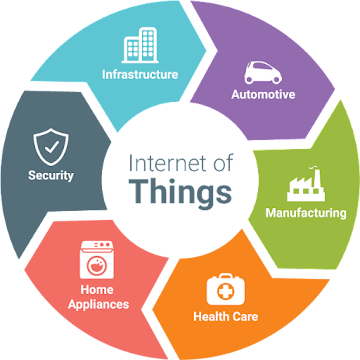What Are the Biggest Barriers to IoT Adoption Today?
Implementing the Internet of things is either time-consuming or requires exorbitant prices. Above all, awareness about IoT technology is one of the major challenges that businesses today face. Many businesses are waiting to see how this technology evolves before adopting it.
However, the famous Gartner predicts IoT that by the end of 2020 or by 2021 25 billion ‘things’ will be connected to IoT. By 2025, Cisco and McKinsey Global Institute predicted that IoT will generate a $10-$14 trillion dollar market.
Still, many industrialists underestimate their business capability to adopt and consider investing in IoT solutions. Also, around 50% of the businesses have no plans in implementing IoT technology, as per the PwC Annual Manufacturing Report.
Some SMEs are still confused about adopting IoT due to a lack of right and appropriate resources. Similar to these challenges, other barriers that do not allow manufactures to leverage the potential of IoT.
These Barriers Aren’t Letting People Embrace IoT
Security Concerns
Data privacy is still a security concern because IoT devices carry enormous data to function. Since IoT systems talk to external networks, thus security can be a little tricky.
In the market, where everyone is rushing to launch their products, weighing security concerns are even more vital. Cases, like connected refrigerators and Hello Barbie dolls, were sensational cases of systems getting hacked.
There have been many cases of viruses attacking the computer system of big industries, thus when a robust solution will be available that assures the security of the industry’s confidential data, people will have the confidence to adopt the IoT technology.
Lack of Knowledge
One of the key challenges that new technologies face is people’s inadequate knowledge of them. Thus, most people prefer to sit in the corner and observe what latest trends and technologies are giving the world.
In the competitive world, where big brands are yielding IoT products and services, making everyone’s head spin, will slowly and steadily make it easier for others to learn about IoT technology.
Building a Better Infrastructure
However, brands like Amazon, Microsoft, AT&T, and Verizon all are working to build a strong infrastructure for IoT products and services manufacturers. IoT cloud service providers and mobile network companies including the microprocessor, ARM, have developed ARMmbed end-to-end IoT solutions.
Even though most of the companies are rivals, but are working to put the mixed technologies together, which customers can easily identify in a less onerous way & understand the true potential of IoT.
Lacking Standards
Another challenge that any marketer face adopting the Internet of Things is the lack of interoperability standards.
Since there is no single standard to gain widespread acceptance, the government of Japan and Germany is expected to establish a unified standard for both commercial and industrial applications. Until then, businesses will have the challenge to run IoT on their standards.
Undefined Workflow –
Since IoT is among the new emerging technologies, thus it is also difficult to establish a clear workflow for product development. IoT’s current work processes are challenging to implement in the industrial space because of the inexperience.
Also, most of the industrialists have hands on the conventional workflows, which makes it challenging to adopt the IoT workflow. Thus, companies like Dell and more are working to help the IoT solution providers to cut down the complexity.
Incompetent in Data Operability
The Internet of Things is influencing everything it touches, like smartwatches & bands, smart buildings, smart cars, and many more. Organizations undertaking project implementing IoT is summoning it as device connectivity technology, which makes the IoT ecosystem complex through a myriad of devices connected.
Thus, to connect any product, through the internet, interoperability must have a structured and robust system which can ensure gathering, processing, and understanding the data to act upon.
Unclear-Indefinite Business Case
Just for the sake of implementing an IoT initiative will not derive value to the business. Requisite knowledge and potential of this disruptive technology must be known.
Also, it is essential to identify why your organization needs IoT technology and how it can help boost efficiency, productivity, and profitability. When these evaluations are not made, it becomes hard to measure progress and identify success with the initiatives you have to concoct to complete the goal.
Exorbitant Cost of Implementation
IoT technology and cloud services are budding and progressing gradually. The implementation costs of IoT are inflating liability on the small and mid-scale industry. Thus, IoT service providers are striving to soon adjudicate a reasonably priced process model to implement the IoT hardware.
In the Nutshell –
An organization must imbibe IoT cloud services only after calculating the progress and success IoT can bring to the business. Referring to an IoT solution provider can always help you draw the right business case, inculcating IoT in it, and identify the areas of IoT implementation for greater prospects.



Comments
Post a Comment